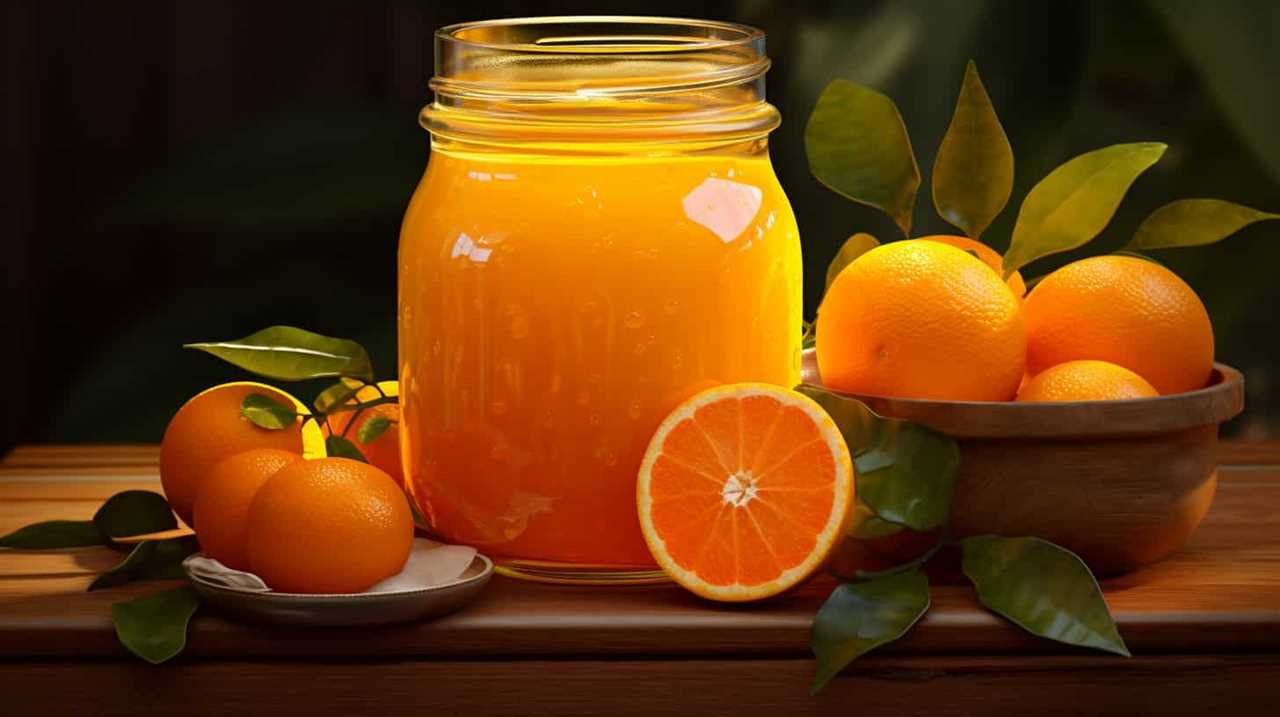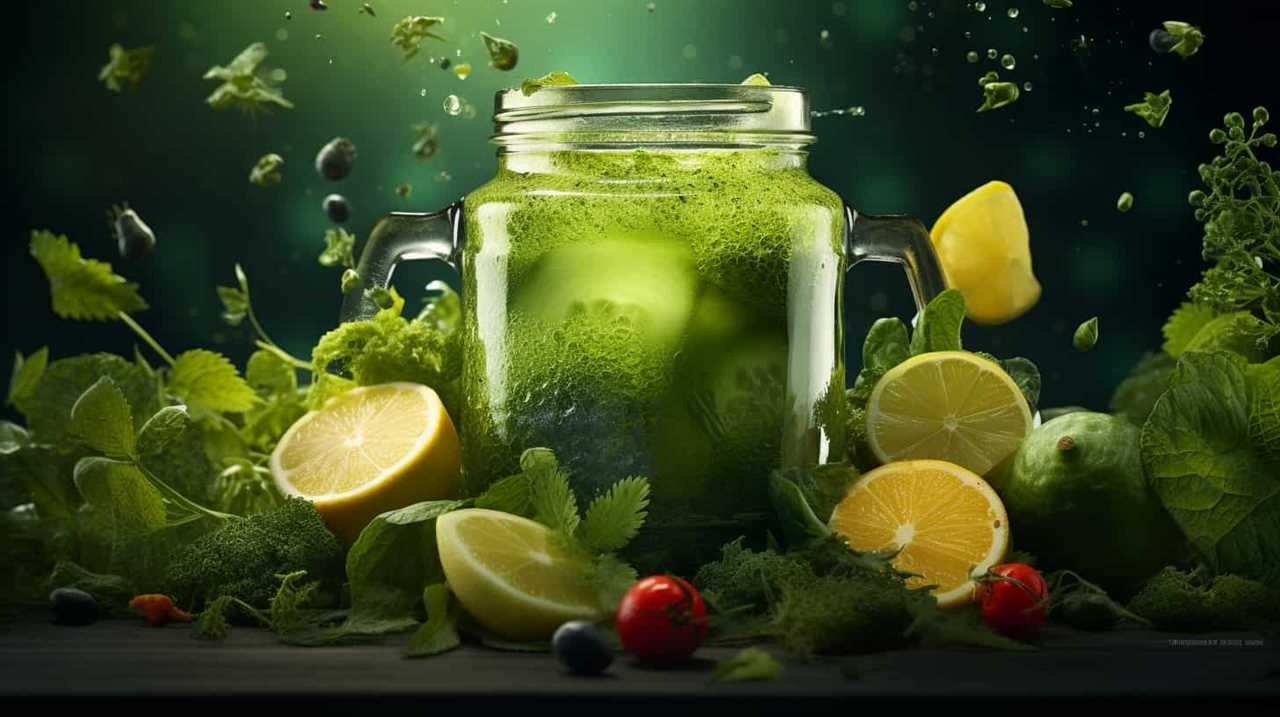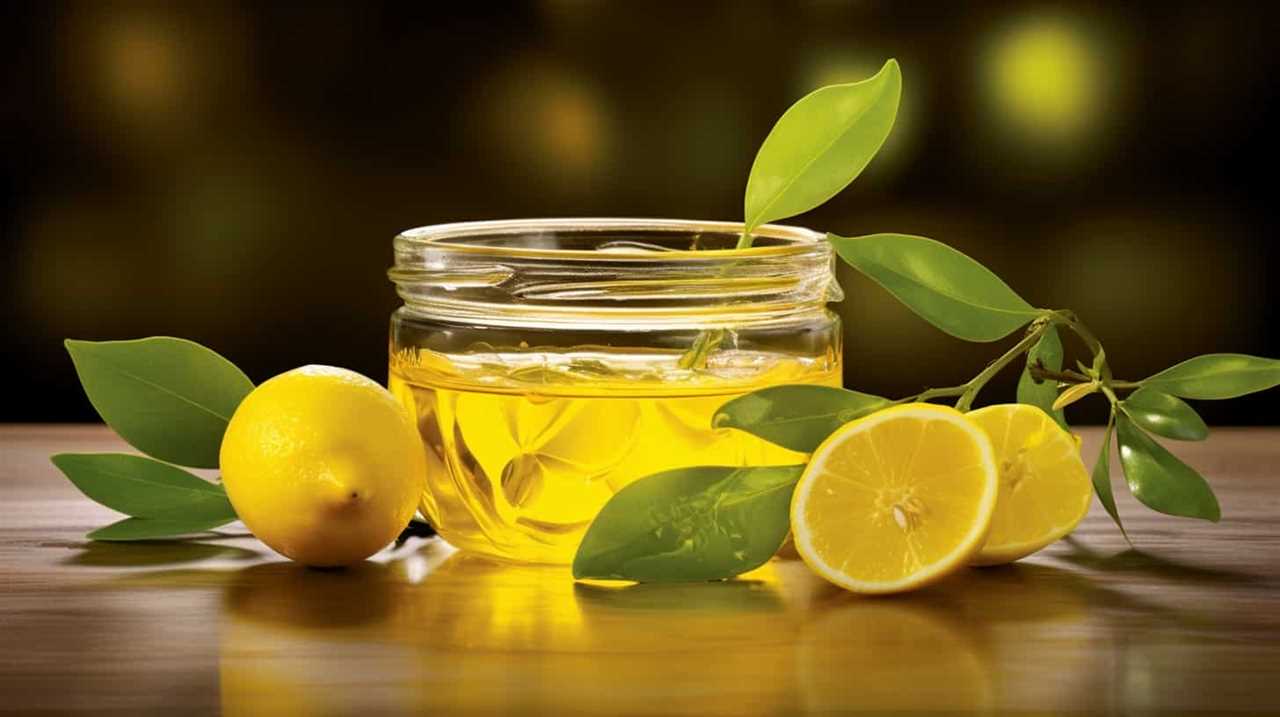Have you ever craved a refreshing, tangy drink that really wakes up your taste buds?
Look no further than our guide on how to make Roses Lime Juice.
We’ll take you through the steps of gathering the ingredients, preparing the limes, extracting the juice, adding the perfect amount of sweetness, and bottling it up for future enjoyment.
Join us as we embark on this citrusy journey and discover the art of serving others a delightful beverage.

Key Takeaways
- Choose juicy and fragrant limes that are firm and vibrant green.
- Extract the lime peels using a sharp vegetable peeler or a zester.
- Use granulated sugar and a dash of water as the sweetener, adjusting the sweetness levels to achieve the desired taste.
- Thoroughly clean and sanitize the bottles before storing the lime juice.
Gathering the Ingredients
We’ll start by gathering up all of the ingredients for making Rose’s Lime Juice. When it comes to choosing the right type of limes, it’s important to select ones that are juicy and fragrant. Look for limes that are firm and have a vibrant green color. These limes will provide the perfect balance of acidity and sweetness for your lime juice.
Now, onto the tips for squeezing the limes efficiently. Firstly, roll the limes gently on a countertop to help release their juices. Then, cut the limes in half and use a citrus juicer or simply squeeze them by hand. Apply firm pressure and twist the limes to extract every last drop of juice.
Preparing the Limes
We can prepare the limes by washing them thoroughly and patting them dry with a clean towel. This ensures that any dirt or residue on the surface of the limes is removed.
Once the limes are clean and dry, we can proceed to extract the lime peels and zest. Lime peels are the outermost layer of the lime, and they contain essential oils that add a vibrant citrus flavor to the juice.

To extract the lime peels, we can use a sharp vegetable peeler or a zester. Gently glide the peeler or zester along the surface of the lime, being careful not to remove too much of the pith.
The lime zest, on the other hand, refers to the finely grated outermost layer of the lime peel. It adds an intense aroma and flavor to the lime juice. To obtain the lime zest, we can use a fine grater or a microplane. Grate the lime peel using a gentle, downward motion, ensuring that only the outer layer is collected.
The zest can then be added to the lime juice for an extra burst of citrus flavor.
Extracting the Lime Juice
To extract the lime juice, we’ll need to cut the limes in half and use a citrus juicer to squeeze out the juice. Here are the steps you can follow:

- Cut the limes in half lengthwise.
- Place the lime halves onto the juicer, cut side down.
- Firmly press the lime halves onto the juicer, twisting slightly to release the juice.
- Continue juicing until all the limes have been used.
- If you don’t have a lime juicer, you can use alternative citrus fruits such as lemons or oranges and follow the same process.
Using a lime juicer ensures that you extract the maximum amount of juice from the limes, resulting in a more flavorful lime juice. If you don’t have a lime juicer, using alternative citrus fruits can still give you a similar tart and refreshing taste. Additionally, incorporating a variety of citrus fruits like lemons or oranges along with limes can create a balanced, zesty flavor profile. These fruit mixes for energy juice not only provide a refreshing boost but also offer essential vitamins and antioxidants to keep you feeling revitalized. Experimenting with different citrus combinations allows you to customize the tartness and sweetness to your liking.
Adding the Sweetener
For this step, all you need is some granulated sugar and a dash of water. The sweetener is an essential component in making the perfect Roses Lime Juice. It adds a touch of sweetness to balance the tartness of the lime juice. You have a few sweetener options to choose from, depending on your preference. Some popular choices include simple syrup, honey, agave nectar, or even stevia for a healthier alternative. Adjusting the sweetness levels is important to achieve the desired taste. Too much sweetener can overpower the tangy flavor of the lime juice, while too little can make it too tart. To help you find the right balance, here’s a handy table to guide you:
| Sweetness Level | Sugar Amount | Water Amount |
|---|---|---|
| Mild | 1/4 cup | 1/4 cup |
| Medium | 1/2 cup | 1/4 cup |
| Sweet | 3/4 cup | 1/4 cup |
Bottling and Storing the Lime Juice
After making the lime juice, we can now move on to bottling and storing it. Here are some tips to ensure that your homemade lime juice stays fresh and flavorful for as long as possible:
- Properly sanitize the bottles for storage: Before bottling the lime juice, make sure to thoroughly clean the bottles with hot, soapy water. Rinse them well and then sanitize them by either boiling them in water for a few minutes or running them through a dishwasher cycle.
- Use clean, airtight bottles: Choose glass bottles with tight-fitting lids to store your lime juice. This will help prevent contamination and keep the juice fresh.
- Keep the bottles refrigerated: Lime juice should be stored in the refrigerator to maintain its freshness and prevent spoilage. Make sure to refrigerate it promptly after bottling.
- Avoid exposing the juice to direct sunlight: UV rays can degrade the quality of the lime juice, so store it in a cool, dark place or in the refrigerator.
- Label and date the bottles: To keep track of the shelf life, label each bottle with the date it was made. This will help you use the oldest juice first and ensure maximum freshness.
Frequently Asked Questions
How Long Does Homemade Lime Juice Last?
Homemade lime juice has a shelf life of about 1-2 weeks when stored properly in the refrigerator. To extend its freshness, consider using preservation techniques like freezing it in ice cube trays or adding a small amount of citric acid.

Can I Use Bottled Lime Juice Instead of Fresh Limes?
Yes, you can use bottled lime juice as a substitute for fresh limes. However, keep in mind that the taste might differ slightly. Fresh limes provide a more vibrant and authentic flavor to your dishes.
Can I Substitute the Sweetener With a Different Type of Sugar?
Yes, you can substitute the sweetener with a different type of sugar. It’s important to note that different sugars may alter the taste slightly, so experiment to find your preferred flavor.
Is It Necessary to Strain the Lime Juice After Extracting It?
Yes, it is necessary to strain the lime juice after extracting it. Straining removes pulp and seeds, resulting in a smoother texture and clearer juice. Alternatives include using a citrus juicer or a fine-mesh sieve. Not straining may lead to a less enjoyable drinking experience.
Can I Add Other Flavors or Ingredients to the Lime Juice for Variation?
Sure, we can definitely add other flavors or ingredients to the lime juice for variation. It’s a great way to experiment and create unique combinations. Different sweeteners like honey or agave can also be used to enhance the taste.

Conclusion
So there you have it, a simple and refreshing homemade recipe for rose’s lime juice. With just a few steps, you can create a tangy and sweet concoction that will elevate your cocktails and recipes.
Remember, as the saying goes, ‘When life gives you limes, make lime juice!’ Cheers to enjoying the vibrant flavors of freshly squeezed lime juice at home.
Susannah expertise lies in researching and compiling evidence-based content on juicing, nutrition, and overall health. She is committed to ensuring that The Juicery World offers accurate, up-to-date, and trustworthy information to empower readers to take control of their health. Susannah’s goal is to inspire individuals to embrace juicing as a way to nourish their bodies and live their best lives.











